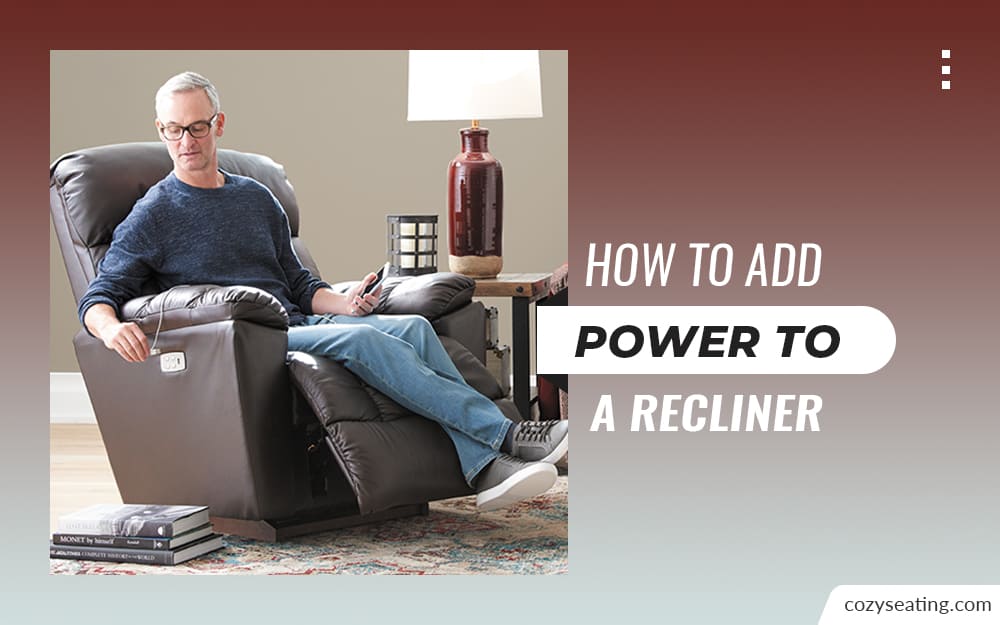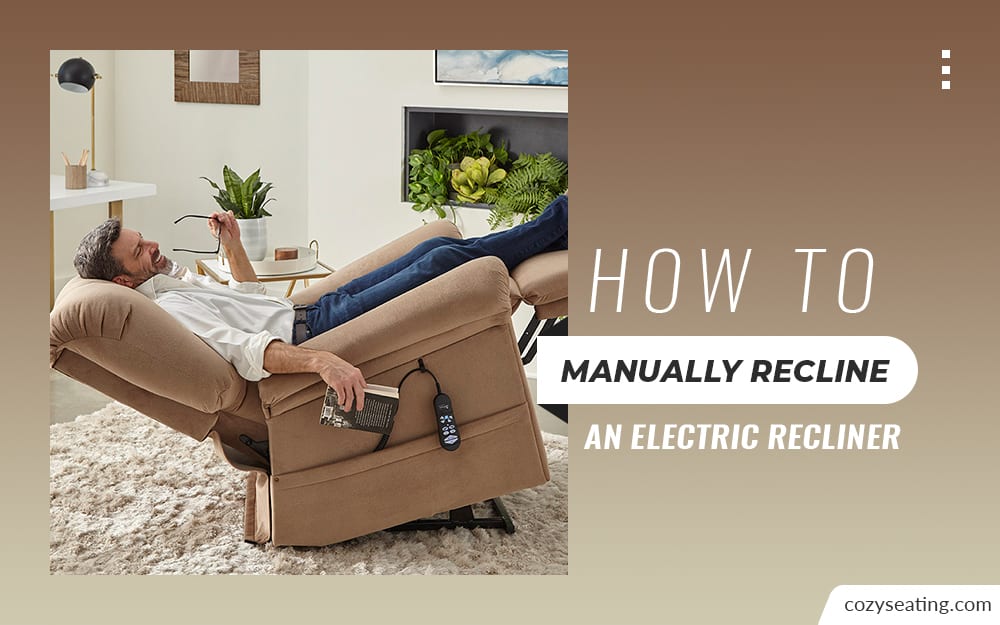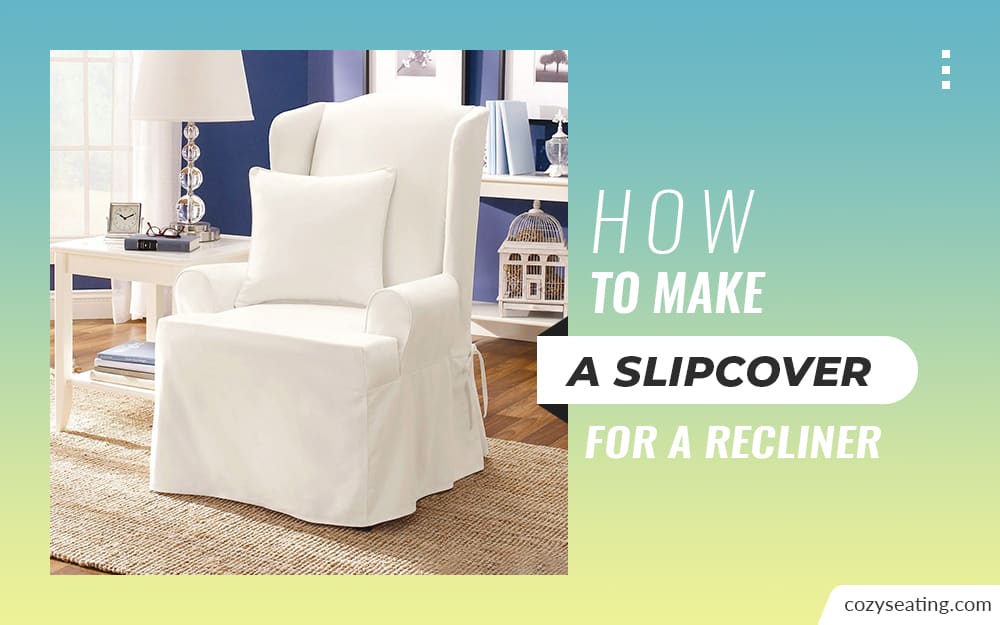
Disclosure: This site is reader-supported & contains affiliate links. We may earn a commission through products purchased using links on this page. Learn more

Nothing is frustrating as an uncomfortable recliner. You don’t need to get a new one; adjusting the tension and position when upright can help modify it for better relaxation. Luckily, most recliners come with nuts and thumbwheels that are easily adjustable.
Conversely, if the recliner has no room for effortless adjustments, there are tools and DIY processes with replacement parts to make it doable. But, what would make you want to adjust your recliner?
Table of Contents
Reasons for Adjusting Your Recliner
You can either increase or decrease the tension of your recliner, depending on many reasons. For instance;
- The recliner’s back tends to fall quickly with a large person, hence needing more tension or resistance. This will be ideal for anyone who will want to use it apart from the massive person.
- You may also need more tension in a recliner to support a pregnant woman or someone with a bad back. Mostly, these users have trouble getting comfortable in a standard recliner.
- If you like plopping on your recliner and notice the back reclining or tilts suddenly, you need to increase its tension. While this will be more comfortable, it is also a safety measure. You risk falling backward from your recliner and hurting yourself.
- Also, you might struggle to get the chair to recline back for lightweight or small persons. This may cause a struggle and make up a reason to avoid using the recliner. Apart from preventing the recliner, people with less strength may end up hurting themselves while trying hard to push back the recliner.
Things to Note before Adjusting the Tension
- Most recliners are heavy, like the oversize recliners in our review, considering the reclining mechanism and the advanced structure. Therefore, adjusting the tension can seem challenging unless you overturn the whole chair. This process will need an extra hand to help lift and tip over your recliner chair.
- Overturning the chair can cause injury if you do not handle it properly. If you did not make the adjustments correctly, the chances of distorting the adjustments are higher as you flip it back upright.
- Moreover, you need to have safety gear and a toolbox to make safe and effective adjustments.
Adjusting the Tension
- Test your recliners tension by sitting and leaning back against the backrest. A recliner’s tension is how easily the recliner leans back while you sit on it. If you find it too hard to lean back, you need to reduce the tension. Reducing the tension of a small build is straightforward than that of an oversized recliner. However, if it leans back quickly and loosely, you need to increase the tension. This is ideal for bigger and heavier recliners to offer firmer support for heavy and tall persons.
- With the back upright and the footrest closed, tilt back the recliner. This way, you will expose the underside of the chair. Make sure the chair rests on the front of the armrests and the top of its back. You will need both hands for the process though holding the chair during the entire time will be tiring and challenging.
- To adjust the tension, you need to look for the adjustment mechanism. Most recliners have the wingnuts and thumbwheel on the left or right side under the seat. Both the wingnuts and thumb wheel should be at the end of a bolt with tension springs connected on the same bolt. Remember that each manufacturer has its style; hence, the adjustment mechanism’s location may vary. Note that, without an adjustment mechanism, you cannot adjust the tension of your recliner.
- Rotate the mechanism clockwise to increase the tension and anti-clockwise to decrease the tension. Try rotating with your fingers, but you can use a pair of pliers if it seems complicated. Make sure you turn as you increase the speed slowly. To have a balanced tension, make sure you rotate firmly the same number of times on both the nuts and wheels.
- Test the adjustments by returning the recliner to its upright position. Sit on the chair and extend the footrest and lean back. If the chair feels comfortable enough, just the way you desire, and then you are free to use it subsequently. However, if you still feel it’s a little loose or firmer, you will need further adjustments. This will require you to repeat the process until you achieve the desires results.
Also read: 10 Best Recliners For Gaming (For PC & Console)
Adjusting the Tension Springs
Sometimes, the springs of a reclining mechanism fail to work hence needing replacement of adjustments. However, replacing a spring is the better approach when the current one fails to work. Luckily, the process is not long and challenging. Here are the steps to accomplish the task;
- Flip over your chair with the backrest upright and the footrest down.
- Look for the attachment point of the tension springs. If the spring is in place, it should be easy to locate where it attaches to the frame.
- Disengage the old springs from the frame. Use a sturdy pair of pliers and disconnect the spring from one end. When dealing with a high tension spring, you need to have safety gear as it can release rapidly, injuring your eyes.
- It would help if you had springs that are specifically for your recliner’s model. This way, you are sure of a perfect match and effectiveness. Otherwise, contact a local dealer to buy those that will be compatible and sturdy enough for your recliner.
- Place a screwdriver on each end of the spring and stretch it gently. You can use a washer or nickel between each coil to separate and maintain the rings in that position.
- Attach one end of the spring on the frame. Use your pliers to pull and connect it to the other end. When handling a high tension spring, you need to be very careful and use locking pliers to enhance a proper grip.
- You need to remove the nickels or washers in between the coils. But make sure the spring is firmly in place attached to both sides of the frame before releasing the nickels. Once you remove the nickels or washers, the spring will bounce back to its normal tension.
- Test the tension springs with the recliner back in its upright position. To do this, you need to sit and lean back on the backrest. There should be some comfortable resistance when you lean. Otherwise, you need to replace the springs with better ones.
Here, we have handy guide on “How to replace a recliner spring“.
Adjusting the Recliner Pitch
A recliner’s pitch is the recliner’s height when it’s in an upright position without an extended footrest. You need to adjust the recliner pitch downwards if your feet do not touch the ground when you sit down. Conversely, consider changing the pitch upwards if your knees are above the seat when you are sitting down. An improper angle can cause lousy sitting posture and much discomfort.
- Flip the recliner over. Allow it to rest on the upper part of its back and the ends of the armrests. This way, your hands will be free to work on the adjustments without any hindrances.
- You will need to look for the cam bolts and adjust them securely in place. Usually, these calm bolts are in the near middle on the bottom of the chair. Unlike the tension bolts, the cam bolts are in the metal frame of the base mechanism. There are four-cam bolts, two on the back and two on the front of the frame.
- Slacken the back bolts using a wrench. Please make sure they are loose enough to wiggle the chair but do not remove or allow them to fall off the frame.
- Work loose the front bolts until you remove them completely. Make sure you keep them in a safe position since you will need them again.
- Adjust the frame by moving the front up or down as you desire to change its position. This is how you adjust the pitch of your recliner. There are about five different settings in the cam bolts’ slot and two pairs of holes where the bolts fit through. This means that you can adjust your recliner to many settings. Even the slightest adjustments in the pitch make a significant difference, so it would be better to work with mild adjustments.
- Return the front bolts once you achieve the desired setting. Begin by fixing them loosely using your fingers as you verify their positions. They should be in the exact positions on each side. Then use your wrench to secure them in place tightly.
- Tighten the loose back bolts in place firmly. Test if the chair is wiggling and tighten more if you feel the chair is not stable and steady.
- Test the pitch to make sure your feet touch the ground thoroughly and the knees are bending at a right angle. A proper sitting posture requires your knees, hips, and elbows to be at the right angle. If you feel the pitch is comfortable, you can continue enjoying the comfort of your recliner. Otherwise, repeat the process until you achieve a preferable pitch.
Want to know?: Is Sitting In A Recliner Harmful To Your Legs?
Conclusion
See, adjusting your recliner is as simple as that. There is no excuse why you shouldn’t do this by yourself and hire a professional. Besides, only the wearer of the shoe knows where it pinches! Do not sit in an uncomfortable recliner anymore.
Recommended Reading

How to Make a Recliner Headrest Cover
Headrest covers are amazingly easy to make–only to take the measurements correctly. Herein, learn how to make a recliner headrest cover and do it like a pro!

How to Add Power to a Recliner? – Pro Tips
Did you know that you can convert your ordinary recliner to power? With only the recommended kit, click here to learn how to add power to a recliner, NOW!

How to Manually Recline an Electric Recliner
Here’s the best step-by-step guide on how to manually recline an electric recliner. Follow this guide keenly–you'll get the most out of your electric recliner.

How to Make a Slipcover for a Recliner
Slipcovers add elegance to your recliner. Thankfully, making them is simple and cost effective. This article discusses how to make a slipcover for a recliner.
